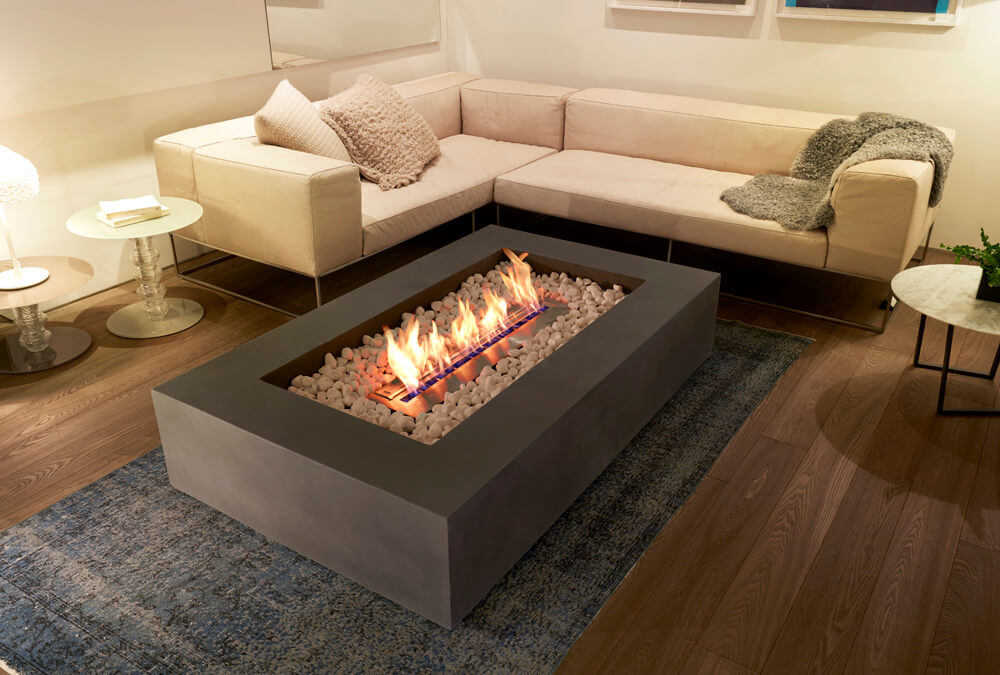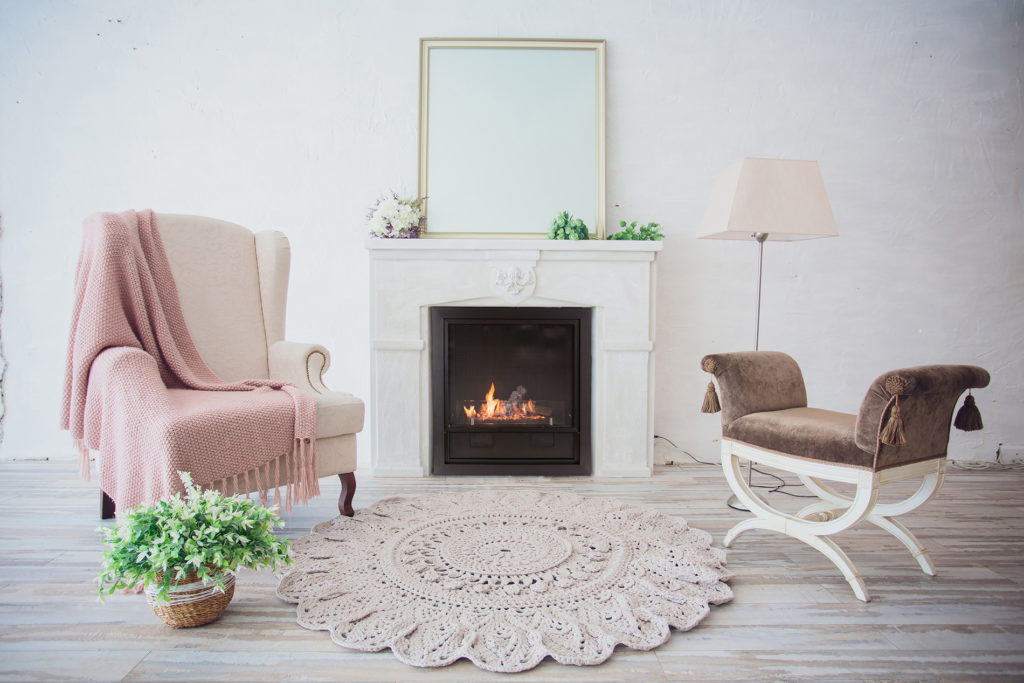Compared to traditional wood burners, ethanol biofuel fireplaces are a very clean way of sustainably heating your home. They require nowhere near as much maintenance, and the level of mess that gets created create is minimal.
Whilst you won’t need to clean the chimney or shovel out buckets of ash on a regular basis, biofuel fireplaces do produce a small amount of residue that can build up over time.
The good news is that these fireplaces are very easy to keep clean. In this brief guide, we take you through how to clean and care for your bio fire one step at a time.
When to clean your biofuel fireplace

Whilst there is no set guidelines for when you need to clean the fireplace, a good rule of thumb is that you should clean your biofire “as soon as you notice a black residue forming around or on the burner”
Most people will need to clean their fireplaces more often in the winter, as they tend to get used more during the colder months.
How to clean your ethanol biofuel fireplace

1. Remove the burner
“Any stainless steel ethanol fireplace consists of the two main parts: a burner and a fireplace body or trim.”
The burner accumulates residue faster than the surrounding materials, as it is subjected to more intense heat and direct contact with the flames.
2. Clean the burner
The best way to remove any residue from the burner is to wipe it with a soft cloth, warm water and mild soap (ideally a pH neutral variety).
If your burner hasn’t been cleaned for a while and has accumulated lots of dirt, try using the coarse side of a kitchen sponge to remove the more persistent markings.
When using a sponge, make sure to only scrub (softly) with the grain. Scrubbing against the grain may result in permanent scratch marks on your beautiful stainless steel finish.
3. Dry the burner
Wipe your burner down with a dry cloth, and let it sit until it’s completely dry. Remember to wait until all the moisture has disappeared before attempting to light the fire, as water residue can damage your fireplace if you try to ignite it without letting the burner dry first.
4. Clean the fireplace body
While you’re waiting for the burner to dry, use a soft cloth and warm, soapy water to wipe the residue from the surrounding body of the fireplace.
If there is too much residue or it is difficult to remove, the coarse side of a kitchen sponge should help you to get a deeper clean. Just make sure to scrub very gently and don’t go against the grain.
For a beautiful, shiny finish, try polishing the body with stainless steel cleaner. Glass surfaces can be wiped down with a quality glass cleaner for a ‘streak-free’ finish.
5. Reassemble and refuel
Once everything is clean and dry, put the burner back together and refuel with approved ethanol biofuel. Your fireplace should now be sparkly clean and ready to warm your home!
This entire process only takes 5-10 minutes (plus drying time) – making it an easy task to incorporate into your regular household routine. Biofuel fires are made to be hassle free, easy to use and simple to maintain.
Things to keep in mind

Do not use steel wool, as this will damage the beautiful stainless steel finish. Avoid using cleaning chemicals (aside from steel polish and glass cleaner) – warm, mild, soapy water and a soft cloth are the best tools for keeping your burner clean.
Always make sure that your burner and the insides of your fireplace are 100% dry before using it again. If you accidentally spill any ethanol while refueling, make sure to remove all of it before igniting the fire.
For more biofuel fireplace safety guidelines, check out this article.
How are you keeping warm this winter?
In many ways, biofuel fireplaces provide an ideal, ‘no fuss’ solution to keep your house warm without the traditional hassles of installing a wood burner or heat pump.
Here are some of the reasons why Kiwis are making the switch to ethanol bio fires:
- No building consent or chimney is required to use them indoors.
- Can be retrofitted to existing houses with ease.
- Simple and low cost installation.
- Environmentally friendly.
- They are affordable to own and operate.
- Produces no smoke, ash or soot.
- Most can be remotely controlled from your smartphone.
- Most do not require a power source.
- Permitted in smoke controlled areas.
- Aesthetically pleasing for all kinds of homes.
- Ability to regulate the flame size.
- Easy to maintain.
Our sister company, Naked Flame is New Zealand’s leading biofuel fireplace company – check out our innovative ranges here.
